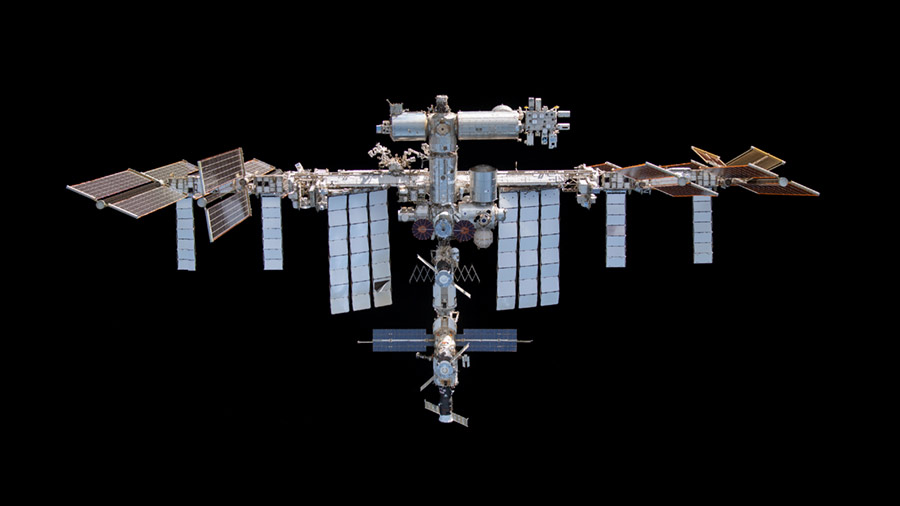
The two crews living and working aboard the International Space Station continued gearing up for next week’s science and maintenance spacewalk. The nine space lab inhabitants also focused on long-running heart research and continuous maintenance on orbital lab systems.
NASA Flight Engineers Tracy C. Dyson and Mike Barratt are getting ready for the first spacewalk of the Expedition 71 mission set to begin at 8 a.m. EDT on Monday, June 24. The suited up duo will exit the depressurized Quest airlock into the vacuum of space for six-and-a-half hours of radio hardware removal tasks and sample collections of microorganisms that may have exited through station vents.
The veteran astronauts joined Matthew Dominick and Jeanette Epps, both first time NASA flight engineers, studying and practicing the Canadarm2 robotic arm maneuvers necessary to support Monday’s spacewalk. Afterward, the astronaut quartet called down to mission controllers and discussed readiness for the communications hardware and research excursion. This will be Dyson’s fourth career spacewalk since 2010 when she was an Expedition 24 Flight Engineer. This will Barratt’s third spacewalk since 2009 when he was an Expedition 20 Flight Engineer.
NASA astronauts Butch Wilmore and Suni Williams, Commander and Pilot respectively for the Boeing Crew Flight Test, helped tidy up the orbital lab on Thursday and adjusted seats inside the Starliner spacecraft. Wilmore first swapped out thermal gear that protects electronics hardware then refreshed crew provisions inside the orbital outpost. Williams packed trash inside Northrop Grumman’s Cygnus space freighter, swapped out plumbing components, then exchanged space physics research hardware. The two experienced crewmates also entered Starliner and configured the seats aboard the spacecraft before its upcoming departure.
Station Commander Oleg Kononenko and Flight Engineer Nikolai Chub took turns on Thursday staying still for a period of time while wearing sensors recording their heart activity. The yearslong Roscosmos space cardiac study is helping researchers understand how the human heart adapts to long-term weightlessness. Flight Engineer Alexander Grebenkin assisted the duo with the heart research, then set up a camera for automated photography of the Earth’s surface, and finally focused on life support maintenance.
Learn more about station activities by following the space station blog, @space_station and @ISS_Research on X, as well as the ISS Facebook and ISS Instagram accounts.
Get weekly video highlights at: https://roundupreads.jsc.nasa.gov/videoupdate/
Get the latest from NASA delivered every week. Subscribe here: www.nasa.gov/subscribe






